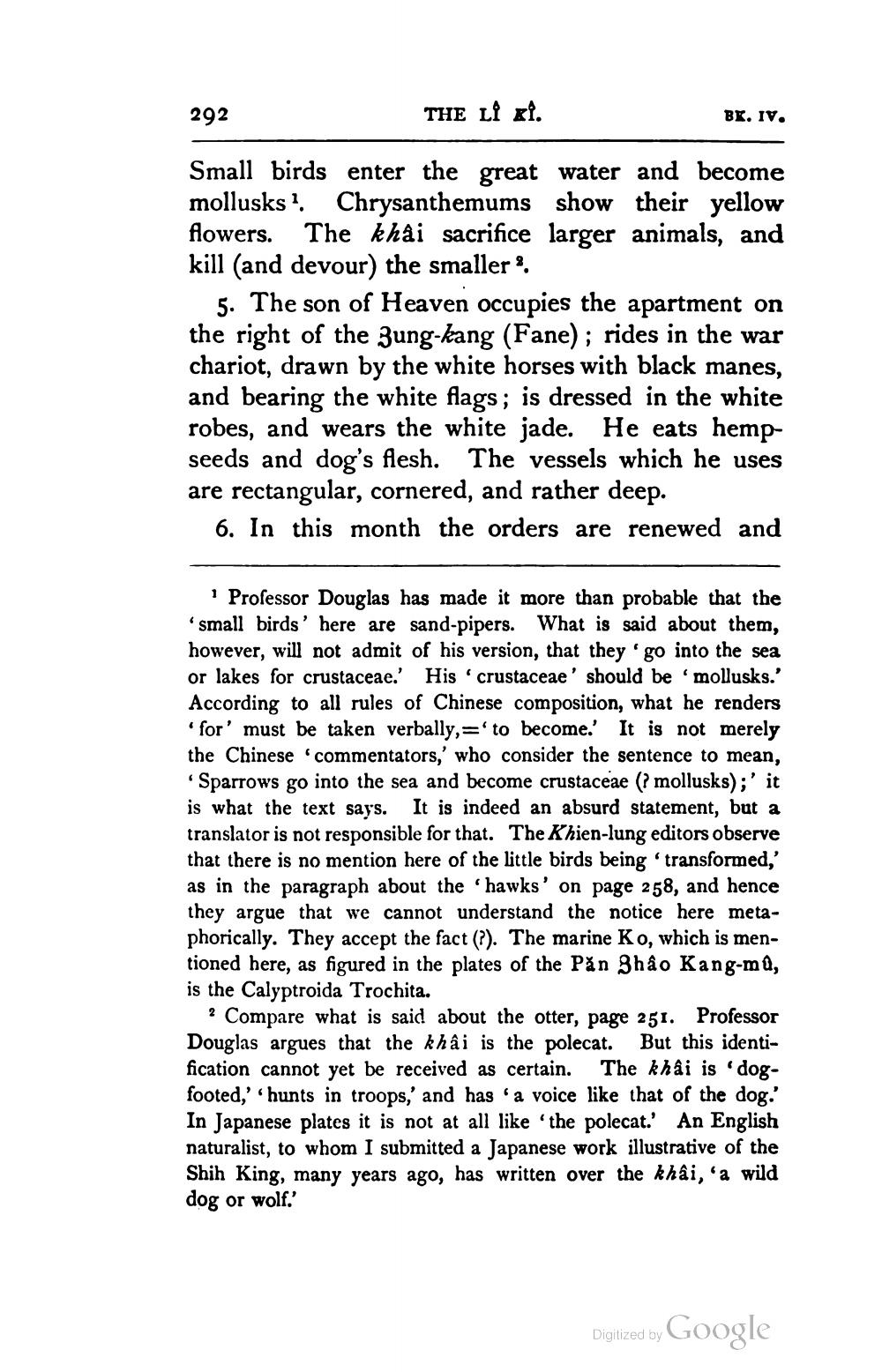________________
292
THE LÎ x1.
BK. IV.
Small birds enter the great water and become mollusks?. Chrysanthemums show their yellow flowers. The khai sacrifice larger animals, and kill (and devour) the smaller ?.
5. The son of Heaven occupies the apartment on the right of the Zung-kang (Fane); rides in the war chariot, drawn by the white horses with black manes, and bearing the white flags; is dressed in the white robes, and wears the white jade. He eats hempseeds and dog's flesh. The vessels which he uses are rectangular, cornered, and rather deep.
6. In this month the orders are renewed and
1 Professor Douglas has made it more than probable that the small birds' here are sand-pipers. What is said about them, however, will not admit of his version, that they go into the sea or lakes for crustaceae.' His crustaceae' should be mollusks.' According to all rules of Chinese composition, what he renders
for' must be taken verbally,='to become.' It is not merely the Chinese commentators,' who consider the sentence to mean,
Sparrows go into the sea and become crustaceae (mollusks);' it is what the text says. It is indeed an absurd statement, but a translator is not responsible for that. The Khien-lung editors observe that there is no mention here of the little birds being 'transformed,' as in the paragraph about the hawks' on page 258, and hence they argue that we cannot understand the notice here metaphorically. They accept the fact (?). The marine Ko, which is mentioned here, as figured in the plates of the Pån Zhao Kang-mů, is the Calyptroida Trochita.
? Compare what is said about the otter, page 251. Professor Douglas argues that the khai is the polecat. But this identification cannot yet be received as certain. The khai is 'dogfooted,'hunts in troops,' and has a voice like that of the dog In Japanese plates it is not at all like 'the polecat.' An English naturalist, to whom I submitted a Japanese work illustrative of the Shih King, many years ago, has written over the khai, a wild dog or wolf.
Digitized by Google




